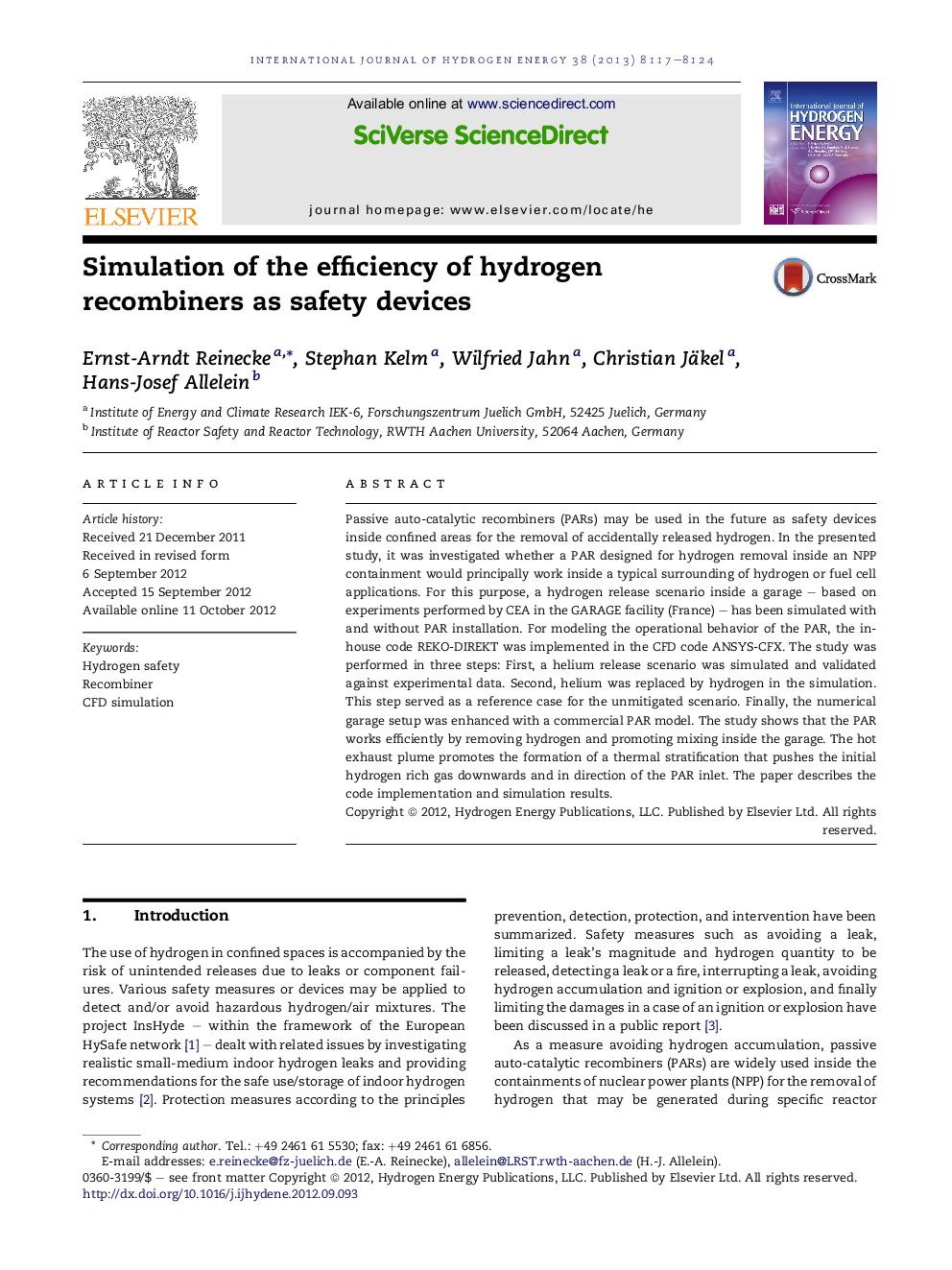| Article ID | Journal | Published Year | Pages | File Type |
|---|---|---|---|---|
| 1273670 | International Journal of Hydrogen Energy | 2013 | 8 Pages |
Passive auto-catalytic recombiners (PARs) may be used in the future as safety devices inside confined areas for the removal of accidentally released hydrogen. In the presented study, it was investigated whether a PAR designed for hydrogen removal inside an NPP containment would principally work inside a typical surrounding of hydrogen or fuel cell applications. For this purpose, a hydrogen release scenario inside a garage – based on experiments performed by CEA in the GARAGE facility (France) – has been simulated with and without PAR installation. For modeling the operational behavior of the PAR, the in-house code REKO-DIREKT was implemented in the CFD code ANSYS-CFX. The study was performed in three steps: First, a helium release scenario was simulated and validated against experimental data. Second, helium was replaced by hydrogen in the simulation. This step served as a reference case for the unmitigated scenario. Finally, the numerical garage setup was enhanced with a commercial PAR model. The study shows that the PAR works efficiently by removing hydrogen and promoting mixing inside the garage. The hot exhaust plume promotes the formation of a thermal stratification that pushes the initial hydrogen rich gas downwards and in direction of the PAR inlet. The paper describes the code implementation and simulation results.
► We simulated a hydrogen release inside a garage with and without PAR installation. ► We implemented the in-house code REKO-DIREKT in the CFD code ANSYS-CFX. ► The study shows that the PAR efficiently removes hydrogen and promotes gas mixing. ► The hot exhaust plume promotes the formation of a thermal stratification. ► The initial hydrogen rich gas layer is moved downwards toward the PAR inlet.
